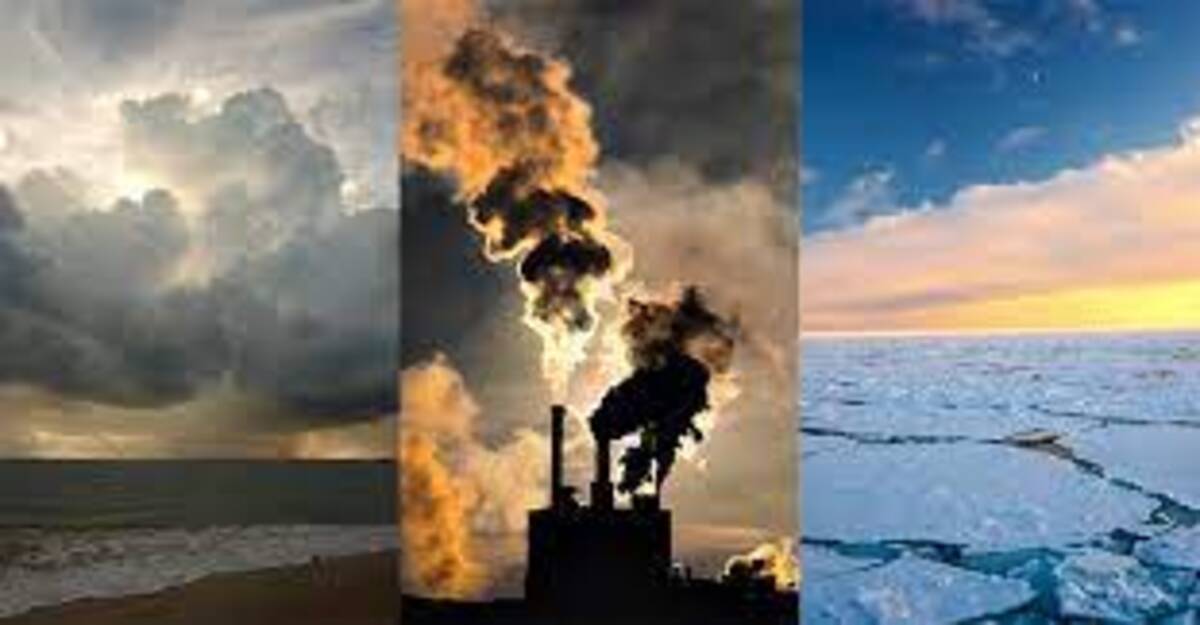According to scientists, the Earth’s long-term average global air temperature has never varied by more than 1.5 degrees Celsius above a stable 14 degrees Celsius since the last Ice Age ended nearly 12,000 years ago and human civilizations developed. However, fossil fuel emissions accumulating in the atmosphere and trapping more of the sun’s energy are expected to push global warming and temperatures above the 1.5C threshold within a decade.
What happens then?
Scientists said in a September report published in the journal Science that irreversible planetary “tipping points” ranging from the melting of the Greenland ice sheet, causing 7 meters of sea level rise, to the release of heat-accelerating methane trapped in melting permafrost, are likely to be triggered.
According to the Intergovernmental Panel on Climate Change (IPCC), this could have dramatic consequences for humans and other life on the planet as extreme weather surges, sea levels rise, and food and water security deteriorates.
Johan Rockström, director of the Potsdam Institute for Climate Impact Research, at COP27 in Egypt said with high certainty that civilizations can thrive in a 14-degree world. But, he added, no one can say with any certainty that we can thrive at (much higher temperatures) because we’ve never been there.
Some countries at the United Nations climate talks have reportedly suggested that the now-critical 1.5C goal is unrealistic and should be dropped from any agreement in Egypt, but others, including the low-lying Maldives, have insisted on its retention.
How close is the world to exceed 1.5 degrees Celsius of warming, the more aggressive temperature limit set in the 2015 Paris Agreement?
Here are some explanations Rockström, a leading climate scientist, gave.
How far have we gone?
Temperatures have risen at least 1.2 degrees Celsius above pre-industrial levels, according to IPCC scientists, but the warming has not been distributed evenly.
Temperatures on land have already risen by about 1.5 degrees Celsius – more than in the larger, cooler oceans – and the northern hemisphere is particularly warm, with Europe warming by about 2 degrees Celsius and the Arctic warming by 3 degrees.
According to Rockström, the amplification becomes stronger as one travels north.
We are measuring temperatures in a variety of locations around the world and by a variety of agencies, such as the United States National Oceanic and Atmospheric Administration (NOAA) and the United Kingdom’s Met Office Hadley Centre, significant data gaps remain.
It’s impossible to measure every pixel on the planet. We don’t measure much in Antarctica or the Arctic, according to Rockström. He added that this implies that we are underestimating temperature rise because we do not have all of the data points.
Europe and the Arctic are warming so quickly in part because more of the planet’s land – which is warming faster than its oceans – is in the northern hemisphere, as well as the planet’s tilt toward the sun.
However, Europe’s success in reducing air pollution is also a factor in global warming, according to Rockström.
Don’t say pollution can help with global warming?!
In more polluted areas, such as major cities in China and India, haze effectively reflects some of the sun’s energy back into space, acting as “small microscopic mirrors,” according to the scientist.
According to IPCC scientists, air pollution around the world is likely holding down global average temperature readings by about 0.3C.
That means the planet “has 1.5C in the pipeline” but isn’t yet showing the effects, explained Rockström.
That is concerning, he said, as many countries attempt to transition quickly to green renewable energy, which would provide cheaper and cleaner power while also cleaning up the choking skies.
If we cleaned up the air in Mumbai, New Delhi, and Beijing, we would see an immediate warming pulse, according to Rockström.
Are we there yet?
At the current rate of fossil fuel consumption, only seven to eight years remain before reaching the 1.5°C limits. To meet the target, countries, businesses, and individuals would need to cut emissions by half every decade until 2050.
That is a daunting task, given that global emissions are still rising, implying that an overshoot of the target is now likely, thinks Rockström.
The key, he says, will be to keep the overshoot as small as possible – hopefully, fractions of a degree – and to quickly bring temperatures back down.
Is the global warming temperature reversible?
Machines that pull carbon dioxide from the air and store it underground exist, but the cost of running them remains prohibitively expensive.
Maintaining the health of the planet’s remaining forests and other natural systems, which naturally absorb carbon dioxide released by burning fossil fuels, would be a less expensive way to lower temperatures.
According to Rockström, nature has absorbed more than half of the fossil fuel emissions emitted since 1750, about half on land and half in the oceans.
That massive buffering of what would otherwise be catastrophic climate change amounts to “the largest subsidy in the world economy,” he claims.
However, as deforestation and other forms of land degradation increase in many parts of the world, nature’s ability to absorb climate pollution decreases.
If the world exceeds the 1.5C temperature limit, healthy ecosystems combined with a cessation of fossil fuel use could help absorb pollution and bring temperatures back down over time.
Rockström explains that this will only work if we don’t destroy nature.
We cannot do it. Now what?
Dropping the 1.5C limit in favor of a higher one would significantly increase the risks of food and water scarcity, conflict, deadly extreme weather, and other crises, according to Rockström and other scientists, and would likely push the world past dangerous tipping points from which there is no way back.
Rockström says that 1.5C is a temperature threshold we cannot drop in order to keep the planet safe od global warming. Beyond that, “what is certain is that there is a significant risk, and we do not wish to take that risk.”

